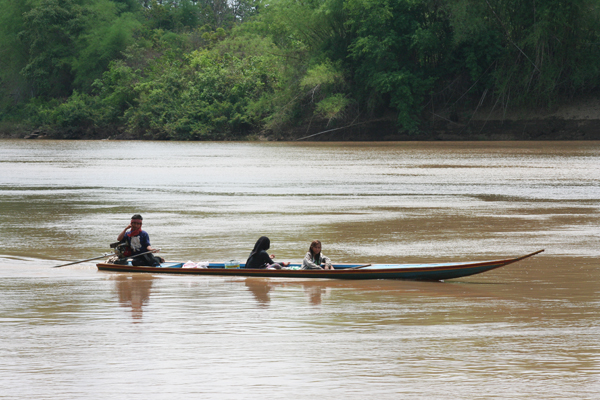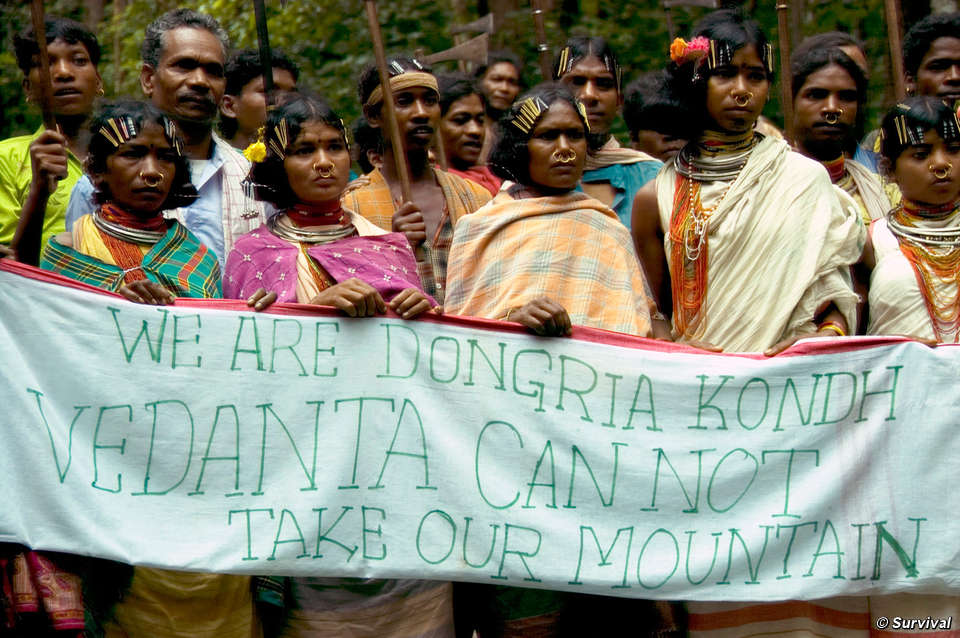by Deep Green Resistance News Service | Nov 25, 2012 | Worker Exploitation
By Agence France-Presse
At least 109 people died when fire swept through a factory in the worst-ever blaze to hit Bangladesh’s garment industry, officials said Sunday, as witnesses told of desperate workers jumping from upper floors.
Firefighters battled for several hours to contain the blaze, which broke out on the ground floor of the nine-storey Tazreen Fashion plant 30 kilometres (20 miles) north of the capital Dhaka late on Saturday.
Survivors told how panicked staff, most of them women, tried to escape the burning factory, which made clothes for international brands including the European chain C&A and the Hong Kong-based Li & Fung company.
“I smelt smoke and ran downstairs and found that the place was already full with black fumes,” Rabiul Islam told AFP as he surveyed the gutted ruins of the building where many of his colleagues had died.
“With another worker, I broke open an exhaust fan in the second floor and jumped to the roof of a shed next to the factory,” he said. “I broke my hand but survived somehow.”
Bangladesh is a global centre for clothes manufacturing due to cheap labour, with many popular brands using huge factories to produce items for export to Western markets. But work conditions are often basic and safety standards low.
Dhaka district commissioner Yusuf Harun told AFP the death toll was 109, including several workers who died while jumping from windows or the roof. About 100 people were injured.
“We laid the bodies out in the grounds of a nearby school and have now started handing them over to relatives,” Harun said.
The director of the fire brigade, Major Mahbub, who uses one name, said many victims died of suffocation as the blaze started in the ground-floor warehouse, trapping staff working on the night shift.
“The factory had three exits but since the fire was on the ground floor, workers could not come downstairs,” he said, adding that most victims were women.
Kalpona Akter, director of the Bangladesh Centre for Workers Solidarity, said the blaze was the worst that the nation’s garment industry had ever suffered.
The owner of the factory, Delwar Hossain, told AFP by telephone the cause of the fire was not yet known but he denied his premises were unsafe.
“It is a huge loss for my staff and my factory. This is the first time we have ever had a fire at one of my seven factories,” he said, confirming that the plant made clothes for C&A and Li & Fung.
Thorsten Rolfes, C&A spokesman in Berlin, said the company had commissioned the factory to make 220,000 sweaters to be delivered to Brazil.
“The victims and their families are in our thoughts and prayers,” he said.
Li & Fung was not immediately available for comment.
Tuba Group, the parent company of Tazreen Fashion, said on its website that the factory opened in 2009 and employed 1,630 workers making polo shirts, T-shirts and jackets.
It also said its factories make clothes for Walmart, Carrefour and IKEA, and added that the Tazreen plant had 60 smoke detectors and more than 200 fire extinguishers.
Relatives of the workers made phone calls to those inside the factory as it burned, local residents told AFP, and one witness said firefighters were helpless as the blaze took hold.
“I came to the factory premises and found workers crying for help,” Mohammad Ratan said. “I saw many jumping from windows.”
A police investigation was underway and no cause had been identified, but fires as a result of short-circuits and shoddy electrical wiring are common in South Asian factories.
A blaze in a Pakistan garment factory in September killed 289 workers and injured 110 more. Two of the owners are facing murder charges.
According to the Clean Clothes Campaign, a Amsterdam-based textile rights group, at least 500 Bangladeshi garment workers have died since 2006 in factory fires.
“These brands have known for years that many of the factories they choose to work with are death traps,” said its spokeswoman Ineke Zeldenrust. “Their failure to take action amounts to criminal negligence.”
Bangladesh has recently emerged as the world’s second-largest clothes exporter with overseas garment sales topping $19 billion last year, or 80 percent of national exports.
The sector is the mainstay of the poverty-stricken country’s economy, employing 40 percent of its industrial workforce.
From The Raw Story: http://www.rawstory.com/rs/2012/11/25/garment-factory-blaze-kills-109-in-bangladesh/

by Deep Green Resistance News Service | Nov 3, 2012 | Biodiversity & Habitat Destruction
By Agence France-Presse
Energy-hungry Cambodia on Friday gave the green light to a multi-million dollar hydropower dam backed by companies from China and Vietnam that activists say will affect thousands of people.
The Hydro Power Lower Sesan 2 project will invest $781.5 million to build a 400-megawatt hydroelectric dam on a tributary of the Mekong River in northern Stung Treng province, according to a government statement.
The government did not name the Chinese and Vietnamese firms involved, but said solutions had been reached for affected villagers.
Prime Minister Hun Sen also ordered authorities and the company to build new homes and prepare land for an unspecified number of families that would be resettled for the project, according to the statement.
Activist Meach Mean, coordinator at an environmental group 3S Rivers Protection Network, estimated more than 50,000 people would be affected by the dam.
“We are surprised by the approval,” he told AFP, calling on the government and the company to hold a public forum to discuss concerns before going ahead.
“We don’t know clearly about the process to build the project,” he said. “We are really concerned about the impact on the people’s livelihoods, water, and ecology system.”
UN human rights envoy Surya Subedi also raised concerns about the dam in a report in September, saying communities reported they had not been adequately consulted about the impact of the project.
Cambodia late last year opened the country’s largest hydropower dam to date, a more than $280 million Chinese-funded project that has attracted criticism from environmental groups.
Spiralling utility prices, driven by the lack of supply, are a major obstacle for Cambodia to attract foreign investment, and the government has struggled to find a way to bring down the cost of power.
Nine dams, including at least four funded by China, are set to open by 2019, and once they are all operational the government says they will generate 2,045 megawatts of power, serving all Cambodia’s provinces.
From PhysOrg: http://phys.org/news/2012-11-cambodia-controversial.html
by Deep Green Resistance News Service | Oct 1, 2012 | Colonialism & Conquest, Indigenous Autonomy, Obstruction & Occupation
By Mongabay
200 indigenous men and women are blockading shipments of construction materials to a dam site in Malaysian Borneo to protest the impact of the hydroelectric project on their traditional forest home, reports the Bruno Manser Fund (BMF), a Switzerland-based group that campaigns on behalf of forest people of Sarawak.
According to the NGO, on the morning of September 26, 200 Penan and Kenyah set up a blockade on the road used by trucks to deliver supplies to Murum dam, a controversial project being built by China’s Three Gorges Corporation. The protesters say they will maintain the road block until Sarawak Energy, the agency behind the dam, meets with them and agrees to their demands relating to involuntary resettlement and their traditional land rights. The dam would flood up to 250 square kilometers of rainforest and farmland, affecting some 1,400 people, says BMF, which adds that the communities fear a repeat of the nearby Bakun dam.
“They have witnessed how the quality of life decreased for their neighboring communities affected by Bakun dam, one of the biggest dams in Asia, when they were forcefully displaced in 1998,” BMF said in a statement. “They do not want to face the same fate: loss of livelihood, poverty and loss of culture.”
The government of Sarawak is planning to build at least a dozen dams over the next twenty years, well exceeding the state’s demand for electricity. But Sarawak says it aims to attract energy-intensive industries like mining. Critics argue that the primary motivation is corruption: large infrastructure offer big opportunities for officials to line their pockets using state funds. Sarawak’s Chief Minister Abdul Taib Mahmud is accused of amassing a personal fortune of some $15 billion through such approaches as well as control over the state’s forest resources.

by Deep Green Resistance News Service | Sep 29, 2012 | Colonialism & Conquest
By Chris Woods / The Bureau of Investigative Journalism
The near constant presence of CIA drones ‘terrorises’ much of the civilian population of Pakistan’s tribal areas according to a new report.
Men, women and children are subjected to almost constant trauma – including fear of attack, severe anxiety, powerlessness, insomnia and high levels of stress – says a nine month investigation into CIA drone strikes in Pakistan by two top US university law schools. More than 130 ‘victims, witnesses and experts’ were interviewed in Pakistan for the study.
A number of those eyewitnesses corroborated the Bureau’s own recent findings – that rescuers have been deliberately targeted by the CIA in the tribal areas.
The new study heavily challenges US government claims that few civilians have died in CIA drone strikes, saying that there is ‘significant evidence’ to the contrary.
As the report notes in its executive summary: ‘In the United States, the dominant narrative about the use of drones in Pakistan is of a surgically precise and effective tool that makes the US safer by enabling “targeted killing” of terrorists, with minimal downsides or collateral impacts. This narrative is false.’
Impact on civilians
The joint report, Living Under Drones , is by Stanford University’s International Human Rights and Conflict Resolution Clinic, and New York University School of Law’s Global Justice Clinic. The 165-page study looks at key aspects of the CIA’s drone programme – its legal basis, how strikes are reported, their strategic implications – and how civilians are affected.
Psychiatrists and doctors report a deeply stressed population in parts of the tribal areas. In their ninth year of bombing, US drones now fly almost constantly over towns such as Mir Ali and Miranshah.
One psychiatrist told researchers that many of his patients experience ‘anticipatory anxiety,’ a constant fear that they might come under attack. The report goes on to note that:
Interviewees described emotional breakdowns, running indoors or hiding when drones appear above, fainting, nightmares and other intrusive thoughts, hyper startled reactions to loud noises, outbursts of anger or irritability, and loss of appetite and other physical symptoms. Interviewees also reported suffering from insomnia and other sleep disturbances, which medical health professionals in Pakistan stated were prevalent.’
Pakistani MP Akhunzada Chitan reported that when he visits Waziristan to see his family, people ‘often complain that they wake up in the middle of the night screaming’ because of the drones.
The Stanford/ NYU report also examines in detail three Obama administration drone strikes. Multiple eye-witness reports of civilian deaths are accompanied by ‘corroborating evidence from other independent investigations, media accounts, and submissions to the United Nations, and courts in the UK and Pakistan.’
In total, more than 50 civilians are likely to have died in these three strikes alone, the report concludes. Anonymous US officials were still claiming recently that civilian deaths have only been in ‘single digits’ during Obama’s entire four years in office.
Attacks on rescuers corroborated
The NYU/ Stanford report also independently corroborates a major Bureau investigation with the Sunday Times, which found that multiple CIA strikes between 2009 and summer 2011 had deliberately targeted rescuers and funeral-goers . Citing a number of eyewitness accounts, the study notes:
Secondary strikes have discouraged average civilians from coming to one another’s rescue, and even inhibited the provision of emergency medical assistance from humanitarian workers.’
Hayatullah Ayoub Khan was driving in North Waziristan when the car ahead of him was damaged in a drone strike. The report says that as Khan approached on foot to see if he could help ‘someone inside yelled that he should leave immediately because another missile would likely strike.’ As he returned to his car, a second missile killed whoever had been inside.
A second anonymised man told researchers of an attack on the home of his in-laws: ‘Other people came to check what had happened, they were looking for the children in the beds and then a second drone strike hit those people.’
People now avoid assisting victims of drone strikes, researchers were told. One ‘leading humanitarian organization’ said that it insists on a six-hour mandatory delay before its workers are allowed to assist, meaning it is ‘only the locals, the poor, [who] will pick up the bodies of loved ones.’
When seven of Faheem Qureshi’s family and friends died in Obama’s first ever drone strike , he believes he only survived because he was able to walk out of the smoking rubble of the house unaided.
‘Usually, when a drone strikes and people die, nobody comes near the bodies for half an hour because they fear another missile will strike,’ Qureshi told researchers.
Funeral practices have also changed in the tribal areas because of fears of CIA attack, according to a number of witnesses. Firoz Ali Khan told researchers:
Not many people go to funerals because funerals have been struck by drones. Many people are scared. They don’t go to funerals because of their fear.’
The UN special rapporteur on extrajudicial killings, Professor Christof Heyns, recently described the deliberate targeting of civilian rescuers as ‘a war crime.’
‘No response’
The joint report by two of the US’s biggest university law schools came after legal campaigning group Reprieve suggested a study into the impact of drones on civilians. It also assisted in putting researchers in touch with some of those affected in Pakistan – although Reprieve has had no editorial input, according to the report.
Professor Sarah Knuckey of NYU’s Global Justice Clinic co-authored the study with Professor James Cavallaro at Stanford. The pair visited Pakistan twice with a team of young lawyers, interviewing more than 130 people in connection with the CIA’s bombing programme.
Knuckey, who has previously investigated killings by the Taliban in Afghanistan, told the Bureau she had been surprised at the high levels of civilian trauma described by health professionals in the tribal areas. Incidence levels more closely resembled those found in higher intensity conflicts, she said.
Asked what she thought the study would achieve, Knuckey said that she hoped that those responsible in the US for covert drone strikes ‘look at this and say there are extremely well documented and serious concerns, both about the impact of our policies on Pakistani civilians, and also on the US’s own interests, and we need to consider this very seriously.’
The Obama administration has so far not engaged with the authors. A July 18 request for a meeting with the US National Security Council has yet to be answered.
From The Center for Investigative Journalism: http://www.thebureauinvestigates.com/2012/09/25/drones-causing-mass-trauma-among-civilians-major-study-finds/

by Deep Green Resistance News Service | Sep 18, 2012 | Colonialism & Conquest, Indigenous Autonomy, Lobbying, Mining & Drilling
By Survival International
Supporters of India’s Dongria Kondh tribe are celebrating after controversial British mining company Vedanta Resources declared it will close its bauxite refinery in the state of Orissa, this December.
The news is a major breakthrough for the tribe, who have fought a David and Goliath battle against Vedanta’s plans to extract bauxite from their land.
Dongria leader, Lodu Sikaka, said today, ‘We will be happy if the company leaves. If the refinery is there, they will keep trying to take our mountain, if not today, then tomorrow, or two years, 10 years from now.’
The Lanjigarh refinery sits at the base of the Dongria Kondh’s Niyamgiri Hills, which are home to the 8,000-strong tribe, and the seat of their god Niyam Raja. The company has spent more than one billion US dollars expanding the site without securing all the required clearances, as well as knowing it was unable to source enough bauxite to run the refinery at capacity.
Vedanta has now blamed the closure on a ‘depleting stock position of bauxite’. But, there are concerns the company’s announcement is intended to pressure the government into allowing it to mine the Niyamgiri Hills. The issue has returned to India’s Supreme Court, but the case is currently adjourned.
Opposition to Vedanta’s push to mine the mountains has embroiled the company in a near decade-long dispute, and forced the Lanjigarh refinery to be run with bauxite from different mines across India. A Vedanta spokesman claimed this has cost the company half a billion dollars.
Survival International’s Director Stephen Corry said today, ‘When we started our campaign for the Dongria Kondh, we were repeatedly told it was a hopeless case and the mine would be built. It hasn’t been. The infrastructure is rusting away and now Vedanta says it will shelve its refinery. This is a fantastic vindication of the tribal people’s determination to keep the lands which are rightfully theirs, and the pressure brought to bear by thousands of their and our supporters around the world. Public pressure is the only thing which can save tribal peoples in the long-term, and it works.’
From Survival International: http://www.survivalinternational.org/news/8670



